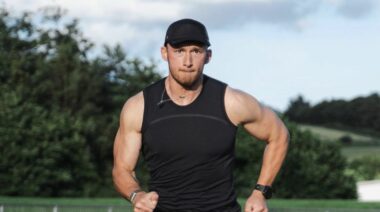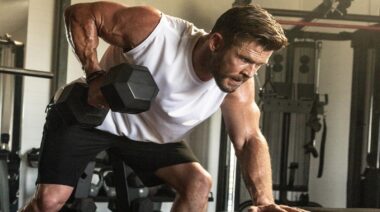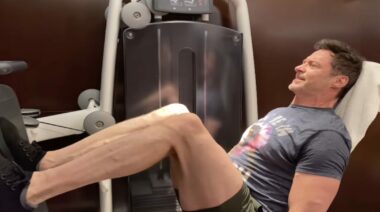Are you not getting results from your exercise program? Here’s what you can do that is backed by science.
There is no one-size-fits-all approach to exercise. Two people doing the same workouts may get very different results. One person might work hard in the gym for months without much progress, while their training buddy gets stronger in each session.
Are you not getting results from your exercise program? Here’s what you can do that is backed by science.
There is no one-size-fits-all approach to exercise. Two people doing the same workouts may get very different results. One person might work hard in the gym for months without much progress, while their training buddy gets stronger in each session.
There’s a term in exercise research1 for someone who doesn’t get the expected results from a specific type of exercise: non-responder. In study after study, some participants improve a lot, and some don’t improve at all, even using the same program.1
It can be frustrating for those who put in the effort and don’t see the results they want, but we can learn from the research in this area to ensure that everyone gets the benefits of exercise.
Here’s an example of how much variation there is across individuals in response to a specific exercise program.
One hundred and twenty-one adults participated in a 24-week walking program, exercising five times per week. Before the study2 started, they were randomly split into three groups:
- A low amount, low-intensity group who walked for an average of 31 minutes per session at an intensity that would be considered moderate according to exercise guidelines. I’ll call this the low group.
- A high amount, low-intensity group who walked at the same intensity but for about double the time in each session (an average of 58 minutes) as the first group. I’ll call this the medium group.
- A high amount, high-intensity group who walked for about 40 minutes in each session at a vigorous intensity. I’ll call this the high group.
Cardio fitness was measured several times throughout the study. After six months, here is how each group did:
- In the low group, 62% of the participants improved their fitness.
- In the medium group, 82% improved their fitness.
- In the high group, 100% of the participants improved their fitness.
When you look closer, there is a wide range of fitness changes, even within the groups.
These graphs show how each person’s fitness changed after completing the program. Each bar represents a person’s response. You can see that some people improved a lot, others a little, and some people decreased.
- In the low group, the range of responses was between an 8% decrease in fitness and a 30% improvement.
- The medium group had a range between a 10% loss of fitness up to a 43% improvement.
- In the high group, the least responsive participant improved by only 7%, while the top responder improved by a whopping 118%.
Remember, within each group, these people were doing the same exercise program, but their results were very different.
This study3 focused on endurance-type exercise for cardiovascular fitness, but this happens in other types of exercise studies as well, including interval training and strength training.
In one strength training study,4 for example, the same 12-week program resulted in changes in strength ranging from no improvement for one person to a 250% increase for another. There were also significant differences in muscle growth between individuals, with one person decreasing their muscle size by 2%, while the most responsive person increased by 59%.
This effect5 has also been seen in nutrition science, with people following the same diet experiencing very different amounts of weight loss, and sometimes even weight gain.
The reasons for these differences aren’t obvious. Of course, factors like sleep, stress, nutrition, and incidental physical activity can impact how someone responds to an exercise program.
Researchers try to take these things out of the equation by asking participants to follow a standardized diet or having them wear activity trackers when they’re not in the lab, but it’s not possible to fully control for them.
Genetic factors also certainly play a role, with research6 indicating that about 50% of the response to cardio exercise is the result of genetic differences.
What Can We Learn From This?
If you’re one of the lucky ones who happen to respond well to a specific exercise program, that’s great! If not, don’t worry. While these findings seem discouraging at first, there is good news. If we delve further into the research, it appears that there are no true non-responders to exercise. Everyone does improve in some way.
If you aren’t getting the results you expect from your exercise program, here are some things to consider the following.
When it Comes to Exercise, Consistency Is Key
The most effective program for you is likely to be the one you’ll do regularly.
In the walking study, the researchers reported the fitness improvements only of the people who attended at least 90% of the exercise sessions over the six months.
Not everyone completing the study managed to do 90% of the sessions. When the researchers went back and included those, who attended at least 70% of the sessions, the percentage of people who increased their fitness dropped by about 4% in the low and medium groups and by about 12% in the high.
I’d say that 70% is still fairly consistent. It means that those people exercised for an average of 3.5 sessions a week, every week, for six months. Most of them improved their fitness. More consistency is better, though. People who attended 4.5 sessions per week (90% of the total sessions) were even more likely to improve.
Consistency is probably the most critical factor in achieving the benefits of exercise. Do something, anything, every week. If you struggle with consistency, focus on setting small, achievable goals and creating sustainable exercise habits before you worry about any of the details of the program you’re doing.
Have the Other Pieces of a Healthy Lifestyle in Place
Get enough sleep, drink enough water, eat plenty of nutritious foods, move as often as possible throughout the day, and manage your stress.
Unless you have these things pretty well under control, you won’t know if it’s the exercise program that you’re not responding to, or if something else in your lifestyle is holding you back.
If One Method Doesn’t Work, Try Another
Maybe you have healthy lifestyle habits, and you’ve been consistent in your exercise for several months with lackluster results. What should you do?
Try increasing the intensity or the duration of each session. If we look at the walking study again, several participants didn’t improve their fitness after six months of consistent, moderate-intensity exercise.
Still, all of the people exercising at a higher intensity did improve. Even with moderate intensity, people who increased their volume (doubling the time spent in each session) were more likely to see improvements.
You could also do more sessions across the week. In another study7, researchers found that when people performed 60 minutes of cycling exercise 1-2 times per week for six weeks, not everyone improved their fitness.
In that study, there were also people doing the same cycling workouts 4-5 times per week, and all of those people did respond. Afterward, the people who hadn’t improved their fitness repeated the program. This time they added two more sessions per week, and all of them improved.
You could try a different type of training. One study had people complete a three-week endurance cycling program as well as a three-week interval training program in random order.8
They found that while some people didn’t improve their fitness with one program, those people did improve when they completed the other program.
For strength training, a range of set and rep protocols9 seems to be effective for different individuals. If increasing muscle mass is your goal, for example, and the traditional four sets of 8-12 reps haven’t worked for you, maybe your body will respond better to heavier weights and fewer reps or lighter weights and more reps.
Treat Your Training As A Science Experiment
Exercise provides a range of different and vital benefits. It can improve your body composition, decrease your risk of many diseases, improve your performance, your brain function, and your mood, and much more.
Even if you don’t see the specific results you’re expecting, you will improve your health and fitness in some way as a result of consistent exercise.
For example, researchers had participants complete a one-year cardio program, exercising for 45 minutes, three days per week. Four different types of cardio fitness were measured at the end of the program.
Again, there was a tremendous amount of variability in the individual responses. And, some of the participants didn’t improve in all four ways. However, every person in the study showed improvement in at least one aspect of their fitness.10
Maybe you’re focusing on the wrong measure of results, or perhaps you’re not tracking your progress closely enough to realize what you’re achieving. If you don’t keep track of what you’re doing and how you are progressing, you won’t know whether or not your program is working for you.
Make a list of a few of the benefits of exercise that are important to you and keep track of each one.
- If you’re interested in improving your health, you might keep track of your resting heart rate, blood pressure, or blood sugar.
- For body composition, you could track your body fat percentage or measurements.
- If fitness and performance are important to you, keep track of your time to complete a certain distance, the amount of weight you lift for each exercise, or the number of push-ups or pull-ups you can do.
- For the more subtle (but equally important) benefits of exercise like mood, stress reduction, focus, the incidence of pain, or energy levels, use a simple 1-10 scale to gauge how you’re feeling each day.
Log this information in a notebook or use a spreadsheet or your phone. Follow a specific program for a few weeks or months, assess how you are responding, and make changes if necessary.
You’ll probably be pleasantly surprised at how many ways you improve your body and your life with exercise.
Maybe your blood pressure didn’t go down, but your mood may have improved, and your 5K time may have gotten better. Perhaps you didn’t lose weight, but your strength increased, and you gained energy and started sleeping better.
These improvements can motivate you to keep going, and if you do, chances are you will find a method of exercise that works best for you.
Don’t Compare Yourself To Others
It should be evident by now that just because your friend got great results following a particular program doesn’t mean you will too. Focus on your progress, not anyone else’s.
The Bottom Line
If you do not see the results you want, keep trying. If you still don’t see results, try something different. Finally, keep in mind that the science is clear. Everyone responds.
If you keep at it consistently, you will achieve meaningful benefits.
References:
1.Pickering, Craig, and John Kiely. “Do Non-Responders to Exercise Exist—and if so, What Should We Do About Them?.” Sports Medicine 49, no. 1 (2019):1-7.
2. Ross, Robert, Louise de Lannoy, and Paula J. Stotz. “Separate Effects of Intensity and Amount of Exercise on Interindividual Cardiorespiratory Fitness Response.” Mayo Clinic, Proceedings 90, no. 11, (2015): 1506-1514.
3. Gurd, Brendon J., Matthew D. Giles, Jacob T. Bonafiglia, James P. Raleigh, John C. Boyd, Jasmin K. Ma, Jason GE Zelt, and Trisha D. Scribbans. “Incidence of nonresponse and individual patterns of response following sprint interval training.” Applied Physiology, Nutrition, and Metabolism 41, no. 3 (2016): 229-234.
4. Hubal, Monica J., Heather Gordish-Dressman, Paul D. Thompson, Thomas B. Price, Eric P. Hoffman, Theodore J. Angelopoulos, Paul M. Gordon, et al. “Variability in muscle size and strength gain after unilateral resistance training.” Medicine & Science in Sports & Exercise 37, no. 6 (2005): 964-972.
5. Gardner, Christopher D., John F. Trepanowski, Liana C. Del Gobbo, Michelle E. Hauser, Joseph Rigdon, John PA Ioannidis, Manisha Desai, and Abby C. King. “Effect of Low-Fat vs Low-Carbohydrate Diet on 12-Month Weight Loss in Overweight Adults and the Association With Genotype Pattern or Insulin Secretion: The DIETFITS Randomized Clinical Trial.” Jama, 319, no. 7 (2018): 667-679.
6. Ross, Robert, Bret H. Goodpaster, Lauren G. Koch, Mark A. Sarzynski, Wendy M. Kohrt, Neil M. Johannsen, James S. Skinner, et al. “Precision exercise medicine: understanding exercise response variability.” British Journal of Sports Medicine 53, no. 18 (2019): 1141-1153.
7. Montero, David, and Carsten Lundby. “Refuting the myth of non-response to exercise training: ‘non-responders’ do respond to higher dose of training.” The Journal of Physiology 595, no. 11 (2017): 3377-3387.
8. Bonafiglia, Jacob T., Mario P. Rotundo, Jonathan P. Whittall, Trisha D. Scribbans, Ryan B. Graham, and Brendon J. Gurd. “Inter-Individual Variability in the Adaptive Responses to Endurance and Sprint Interval Training: a Randomized Crossover Study.” PloS one 11, no. 12, (2016).
9. Beaven, C. Martyn, Christian J. Cook, and Nicholas D. Gill. “Significant Strength Gains Observed in Rugby Players After Specific Resistance Exercise Protocols Based on Individual Salivary Testosterone Responses.” The Journal of Strength & Conditioning Research 22, no. 2 (2008): 419-425.
10. Scharhag-Rosenberger, Friederike, Susanne Walitzek, Wilfried Kindermann, and Tim Meyer. “Differences in adaptations to 1 year of aerobic endurance training: individual patterns of nonresponse.” Scandinavian Journal of Medicine & Science in Sports 22, no. 1 (2012): 113-118.






